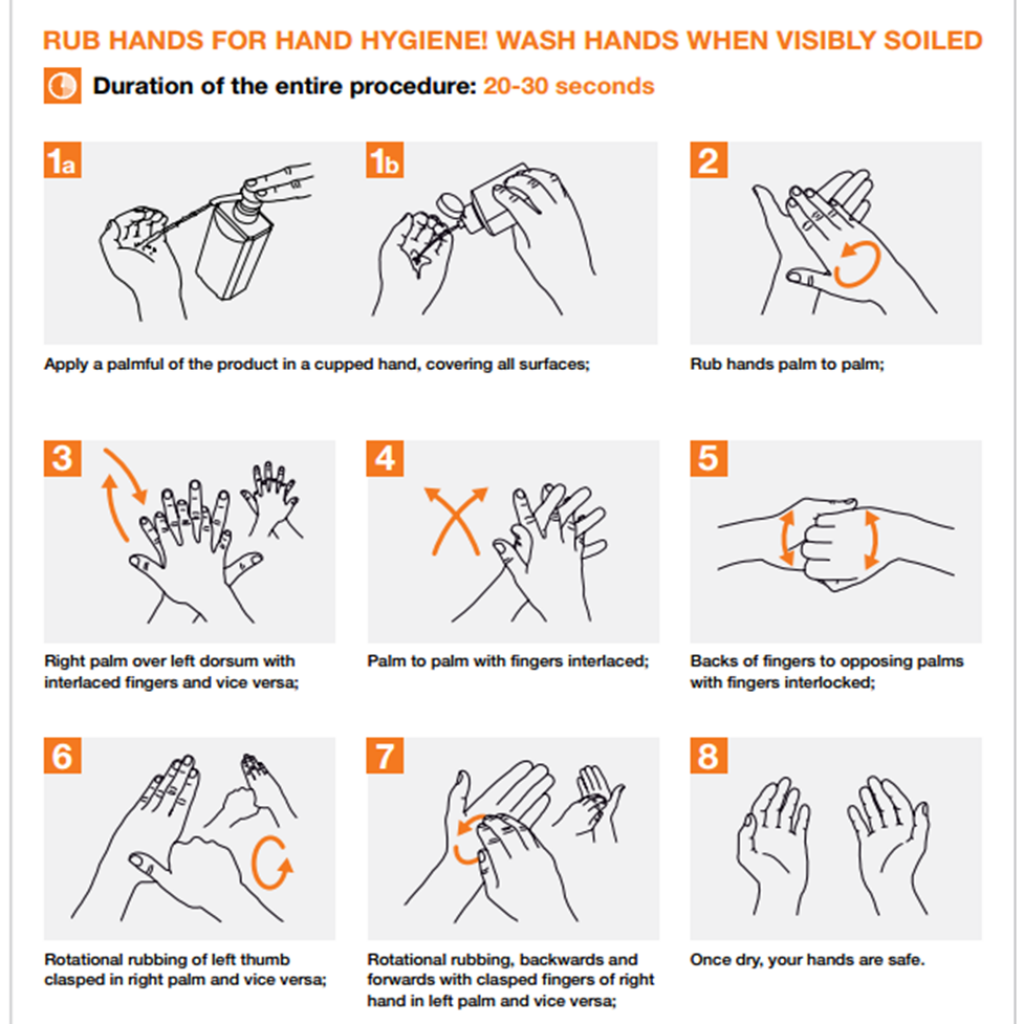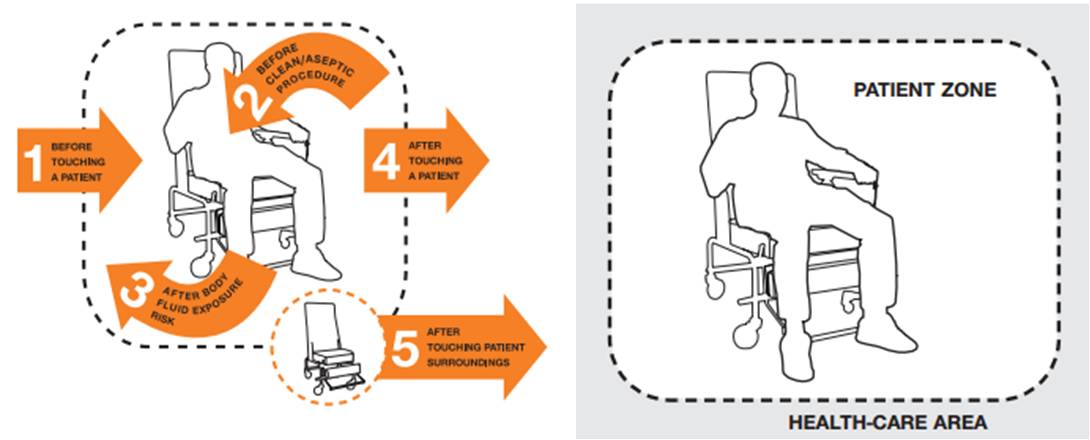We come into contact with germs every day. According¹ to Philip Tierno, Director of Clinical Microbiology and Immunology at NYU and author of “The Secret Life of Germs,” 60,000 types of germs to be exact. They are on gas pumps, shopping carts, cell phones, elevator buttons, and the list goes on. Being in the healthcare industry, it is not only important for our staff to practice proper hand hygiene before assisting our clients but it is also important that we share these techniques to the public to help prevent the spread of infections and diseases. Below you will find tips to improve your hand hygiene techniques.
First, what exactly is Hand Hygiene?
According to the Centers for Disease Control and Prevention (CDC)²,
“Hand Hygiene means cleaning your hands by using either handwashing (washing hands with soap and water), antiseptic hand wash, antiseptic hand rub (i.e. alcohol-based hand sanitizer including foam or gel), or surgical hand antisepsis.”
When should you perform Hand Hygiene?
The CDC suggests you should clean your hands4:
- Before eating
- Before and after having direct contact with a patient’s intact skin (taking a pulse or blood pressure, performing physical examinations, lifting the patient in bed)
- After contact with blood, body fluids or excretions, mucous membranes, non-intact skin, or wound dressings
- After contact with inanimate objects (including medical equipment) in the immediate vicinity of the patient
- If hands will be moving from a contaminated-body site to a clean-body site during patient care
- After glove removal
- After using a restroom
If you hands are not visibly dirty, cleaning your hands with an alcohol-based hand sanitizer is the preferred method. When your hands are visibly dirty with blood or other body fluids or after using the toilet, you should wash your hands with soap and water. With both methods, the duration of time for rubbing your hands clean is at least 15 seconds. The image below shows the technique for washing your hands. These hand motions can be applied to when using the hand sanitizer method as well as the soap and water method. Note: with the soap and water technique, you should dry your hands thoroughly with a towel and use that towel to turn off the faucet.

Figure 2: How to Hand Rub. “Hand Hygiene: Why, How & When?,” by World Health Organization, (2009).
What are the “My Five Moments for Hand Hygiene?”
The “My Five Moments for Hand Hygiene” were identified by the World Health Organization (WHO) as five crucial moments when hand hygiene is required during the care of patients. Figure 2 includes illustrations of the My Five Moments for Hand Hygiene. According to the WHO³, the patient zone in a home care setting “…corresponds to the patient (his/her intact skin and clothes) and the home environment, which is contaminated mainly by the patient’s flora. Any care items and transportation containers brought by the [Health Care Worker] HCWs represent the health-care area. The point of care is where the procedure takes place.” Because there are various direct and indirect contact with the patient, proper hand hygiene is imperative.

Figure 2: Illustration of the My Five Moments for Hand Hygiene and zone concepts. “Hand Hygiene in Outpatient and Home-based Care and Long-term Care Facilities,” by World Health Organization, (2012).
Want to learn more?
For more resources on Hand Hygiene, visit the following sites:
http://www.cdc.gov/handhygiene/providers/index.html
http://www.who.int/gpsc/5may/en/
¹ Brownstein J., Chitale R. (2008, Spetember 5). “10 Germy Surfaces You Touch Every Day.” Retrieved May 2, 2016 from http://abcnews.go.com/Health/ColdandFluNews/story?id=5727571&page=1
² The Centers for Disease and Prevention. (2016, March 15). “Clean Hands Count for Healthcare Providers.” Retrieved May 2, 2016 from http://www.cdc.gov/handhygiene/providers/index.html
³ World Health Organization (2012). “Hand Hygiene in Outpatient and Home-based Care and Long-term Care Facilities.” Retrieved May 2, 2016 from http://apps.who.int/iris/bitstream/10665/78060/1/9789241503372_eng.pdf?ua=1
4 World Health Organization (2009). “Hand Hygiene: Why, How & When?” Retrieved May 2, 2016 from http://www.who.int/gpsc/5may/Hand_Hygiene_Why_How_and_When_Brochure.pdf?ua=1
